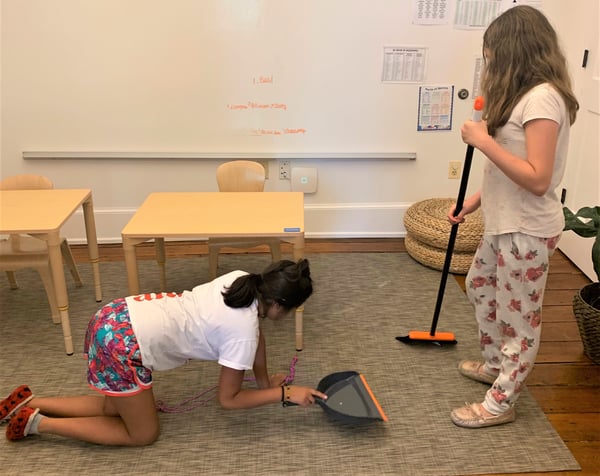One of our beliefs in the elementary studio is that the studio space is sacred. In a literal way, we uphold this belief through the process of studio maintenance, held each day from 3pm to 3:15pm. The learners are responsible for leaving the studio as tidy as they found it.

The Acton children love to bake! One of their favorites is bread from scratch. Add spring onions and sesame seeds to give a fresh twist and let your child knead the dough flat for some extra fine motor activity at home.
Ingredients
- 4 cups flour
- 2 teaspoon sugar
- 2 teaspoons dried instant yeast
- 1 cup water, lukewarm
- 1 tablespoon vegetable oil
- 1 - 2 stalks spring onions, finely chopped
- 1 tablespoon sesame seeds
- ⅛ teaspoon salt
DRIED APRICOT & OAT BARS
Acton learners have enjoyed coconut oat bars all winter, and this recipe adds our spring friend, the apricot, with its sweet and subtle saffron color!
Ingredients
- 2-3 apricots, cut into small pieces
- 1 2/3 cup of all purpose flour
- 1 2/3 cup of rolled oats
- 1 cup of packed brown sugar
- 12 tablespoons of butter, cold and cut into small cubes
- 1/2 teaspoon of salt
- 1/4 teaspoon of baking soda
FRUIT SALAD
With all the delicious fruits in season now, a fruit salad is an enjoyable snack for the children. Start by collecting assorted fruits of choice (cantaloupe, watermelon, apples, kiwis, etc). Cut larger fruits into smaller pieces or peel a fruit for your child who can then use cookie cutters to make fun shapes for their fruit salad. Once you have the fruits all cut up, place them into a bowl. Squeeze lemon juice and rip up a few fresh mint leaves before diving in!
Other enjoyable kitchen activities that your child can help with:
- Setting the table! We love placemats like this one to get young ones started or you can print a simple template like this
- Grating, chopping, or juicing fruits and/or vegetables at lunch or dinner times
- Loading & unloading the dishwasher or, better yet, washing the dishes
- Preparing a snack for themselves or a sibling
- Emerging readers can assist in reading a recipe!

What is a question you’ve pondered that doesn’t have an easy answer or doesn’t have an answer at all? One elementary learner has wondered, “Where did it all start?” What existed before the Big Bang? Another learner has asked, “Is there any alien life? And if there is, why haven’t we found it?”
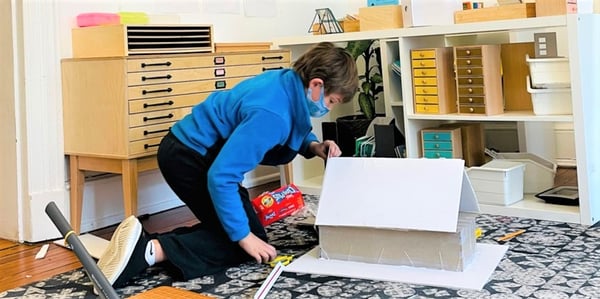
Every session, learners vote to choose which work by their peers will be showcased at the exhibition as an example of the hard work put in by each member of the studio during the session. This session, there was a lot of excitement about the Architecture Quest and Podcasts Writer’s Workshop, and there were more submissions for consideration than ever before!
Showing your work to your peers can be intimidating and requires bravery. The elementary learners are well-versed in giving and receiving feedback and approach these situations with confidence. For this exhibition, learners could submit any part of their work in the Architecture Quest—floor plan, elevation sketch, or final model—for voting. Every learner submitted at least one part of their work, and they all evaluated their fellow studiomates’ projects using this sheet as a guide.
Typically when the learners vote on Writer’s Workshop projects to highlight in the exhibition, they read each work in its entirety first. Because there were so many submissions this session, instead of listening to each submitted podcast all the way through, learners listened to two-minute samples instead. They then cast a blind vote, and the top three most-voted podcasts were played during the exhibition.
Systems for voting are a key part of the elementary studio environment. Learners take voting seriously and use it to uphold standards of excellence in the studio. The learners value fairness and hard work, and voting gives them the opportunity to honor fairness and recognize hard work at the end of each session.
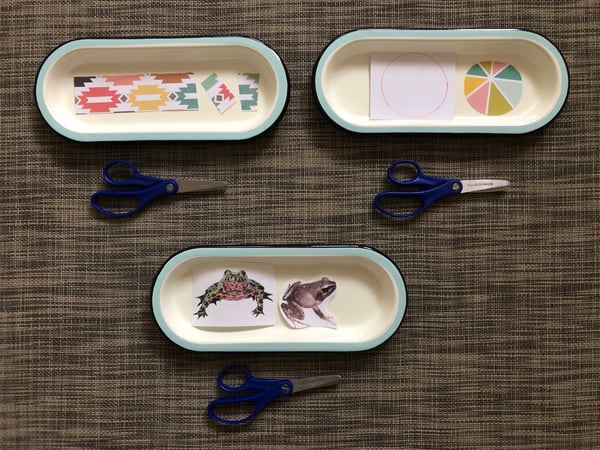
With spring, comes spring cleaning and organizing! The Montessori learners have been enjoying refreshing the studio by wiping down shelves and washing materials as we rotate our units of study. We rotate our materials for two reasons:

“The senses, being explorers of the world, open the way to knowledge.” — Maria Montessori
In our Acton Program for Families event, Acton parents are led through a series of sensory-based exercises using quintessential Montessori materials.
What do you notice about the Pink Tower? The pieces are cubes; they can ascend (or descend) in size; and, yes, the fact that it is entirely pink is an important observation!
The purpose of the sensorial area in the Montessori studio is not to create sensory perception, but to help the child develop and refine sensory perception. The sensorial materials isolate a particular quality; in the case of the Pink Tower, dimension. By isolating a quality, the child can focus his attention on it, explore it, expand on it, create a classification for it, experiment with how it relates to others of its kind, and, eventually, form an abstraction in his mind so that through his imagination, it is always with him.
Takeaways from working with the Montessori sensorial materials:
1 - Abstraction: The ability to create and hold pictures in the mind. Abstractions come from repeated interactions with concrete objects, until eventually the mind no longer needs the physical object but can go directly to the mental image. If I say the word “mug,” you have a picture in your mind of a mug, and you do not need to hold a mug in your hand to understand what I mean.
2 - Classification: The human tendency to look for patterns and make classifications of objects and behaviors. The child who points to a picture in a book and says “kitty” has already made a classification of cats as separate from dogs. Dogs and cats both have four legs, fur, ears, tails, teeth, whiskers, paws and claws, but the child notices what is different between cats and dogs. It is identifying the difference that aids in her classification.
3 - Language: We help the child focus her attention on the precise language that accompanies a specific sensorial experience. The experience is like the hook, and the language is the hat; without the hook, there is nothing on which to hang the hat.
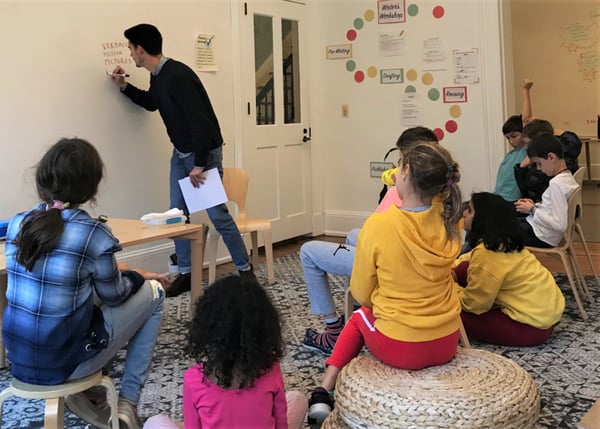
Elementary learners work through each session focused on “the dip.” The dip is a natural part of learning in nearly every activity. When you try something new, at first it can be exciting and you might experience initial success, which makes you feel happy about your progress. But as you continue, at a certain point it may get tough and the results may not come as quickly or as easily as they did at first, despite all the effort you might be putting in. This stage is called the dip.
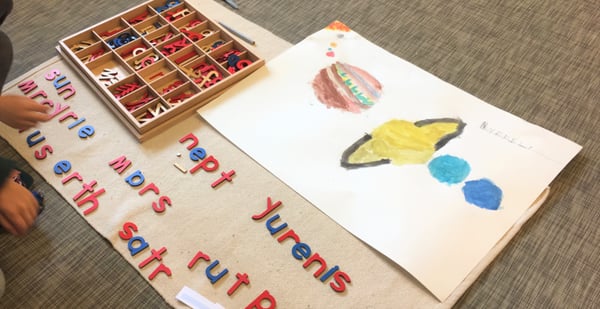
As part of our study of the solar system in the Acton Montessori studio, children learned about Curiosity, the rover that NASA sent to Mars in 2011 to get information about the red planet. “Curiosity” was a new word for many of the learners, and guides discussed with them that it means to wonder and want to know more about something. Then learners shared things that they were curious about. “I’m curious about why an asteroid hit the Earth,” said one learner. “I’m curious about why Mars is red,” said another.
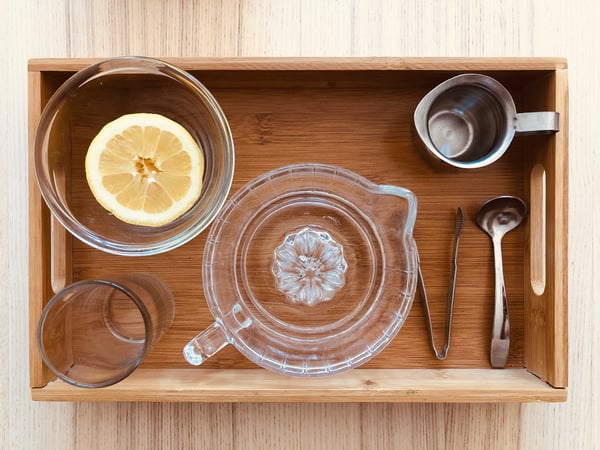
When Life Hands You Lemons...
….Make lemonade! In the Montessori studio, our learners experience many different cooking techniques. One of these is juicing. We have a bowl of halved lemons next to a tray containing a glass juicer, small bowl, pitcher (filled with sugar water), and stirrer. Our sugar water is premade by the guides in the morning and placed in a larger pitcher for each child to replenish independently for the next person.

Elementary learners use a special tool in the studio: the freedoms and responsibilities scale. At Acton, learners are given freedoms and responsibilities that are not typical of many learning environments. These range from doing studio maintenance to setting weekly goals to choosing which core skills area to work on. However, these freedoms and responsibilities aren’t simply granted, they must be earned and respected by learners.
